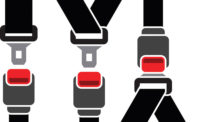Within the next decade approximately 2.7 million “Baby Boomers” (b. 1946-1964) will retire, ensuring tens of thousands of skilled, well-paid positions will become available, all without a ready supply of American workers to fill them. Statistics paint an especially gloomy picture for the manufacturing sector, and a widening of the skills gap as young employees replace old.
Compared to the rest of the economy, the impact on manufacturing of this generational shift is oversized for two reasons:
- Despite increased efforts by colleges and vocational schools to train new manufacturing workers, the available job openings still outpace qualified employees.
- The existing manufacturing workforce is considerably older than the national employee average of 42 years. Currently, the average age of highly skilled manufacturing employees is 56, with nearly a third of all manufacturing professionals over 50. As this generation retires, valuable knowledge goes out the door with them.
What are the implications of these trends for your plant’s productivity?
How will it impact employee safety?
What can you do to transfer knowledge from one generation to the next?
Mind the knowledge gap
Besides having less experience operating machinery correctly, workers new to the job are often unsure about their safety rights and responsibilities, or might feel uncomfortable speaking out about a potential hazard. They may also not have the proper training, so they underestimate the risks involved with operating high-speed, dangerous machinery.
A recent survey of machinists in North America exposed that 70 percent couldn’t recall receiving any formal training when they first hired on.
Equally troubling, millennials (b. 1980-1996) who are replacing baby boomers are more apt to job hop — 90 percent expect to stay in a job for less than three years — leaving manufacturers with heightened turnover and a badly depleted knowledge base, especially when it comes to safety.
It comes as little surprise employees under the age of 25 are twice as likely to visit the emergency room for an occupational injury than those over 25.
The dangers facing younger workers underscore the critical importance of machine safeguarding. The lathe, press or saw on your plant floor considered “safe” solely on the basis of being “accident-free” for many years is no guarantee that modern safety standards are being met. Seasoned machinists may have developed workarounds that prevented accidents. Worse yet, the machinist may have covered up small accidents they’d suffered, considering an occasional nick or scratch simply part of the job. Your “safe” machine may be the most dangerous on the floor. And now it is in the hands of an inexperienced operator.
Safety starts with safeguarding
Faced with a wave of Baby Boomer retirements, some manufacturers are trying to hold onto older workers longer, hoping to persuade them to put off or return after retirement, or to recruit retirees from other companies. Unfortunately, these steps only postpone the inevitable. A more successful, long-term answer is having your plant’s machinery subject to a thorough risk assessment process.
What is valuable about a risk assessment is that it draws on the expertise and experience of an outside company — a fresh set of eyes — to identify machine hazards before they cause accidents. Over the course of the assessment, detailed information is collected concerning each and every machine, its operator and the processes it is tied to. Hazardous areas are pinpointed on the machine with a risk level assigned to each potential danger.
Transferring knowledge
No matter how hard you try, retirees won’t leave behind every bit of knowledge they’ve gained over the years. How can your organization find ways of capturing this knowledge before the machinist hangs up their hat and heads for the white sandy beaches of retirement?
One common way is implementing a structured mentoring program pairing young workers with senior people who are technically expert in complex machinery. Along with face-to-face training on the machinery, the experienced worker is there to answer questions about operating procedures that are unclear or not understood, and to help the young worker learn the ropes of a new job. Recognizing hazards and learning safe work practices must be central part of a mentoring program so make sure it is given equal billing with productivity. Mentors can also play an important role in informing young workers of their OSHA rights to a safe workplace, as well as their right to refuse unsafe work. Once retired, the mentor can return on a part-time or as needed basis to continue training new hires.
Outside training
While older machinists certainly have the experience and technical knowledge, they may not know how to teach because they aren’t professional trainers or they can’t communicate effectively with a younger generation. Others may feel that training is an additional obligation that has been hoisted upon them when they are already crunched for time.
Hiring an outside firm to teach young employees about machine safety overcomes those problems. These firms offer a variety of safety training courses that combine classroom discussion with live demonstrations to give the hands-on experience that new employees need. Once a seminar is complete, the new employee should be enable to interpret the basics like OSHA 29 CRF and ANSI B-11 safeguarding standards as they relate to their specific machine applications and production requirements — perhaps better than the retired operator they are replacing.
Final thoughts
A perfect storm has formed, making it increasingly difficult for manufacturers to find and train labor. The retirement of the baby boom generation only makes matters more challenging. To ensure plant productivity and safety needs are continuously met despite retirements, take proactive steps by conducting a risk assessment of machines; work to promote the transfer of knowledge; and install code-compliant safeguarding equipment.



